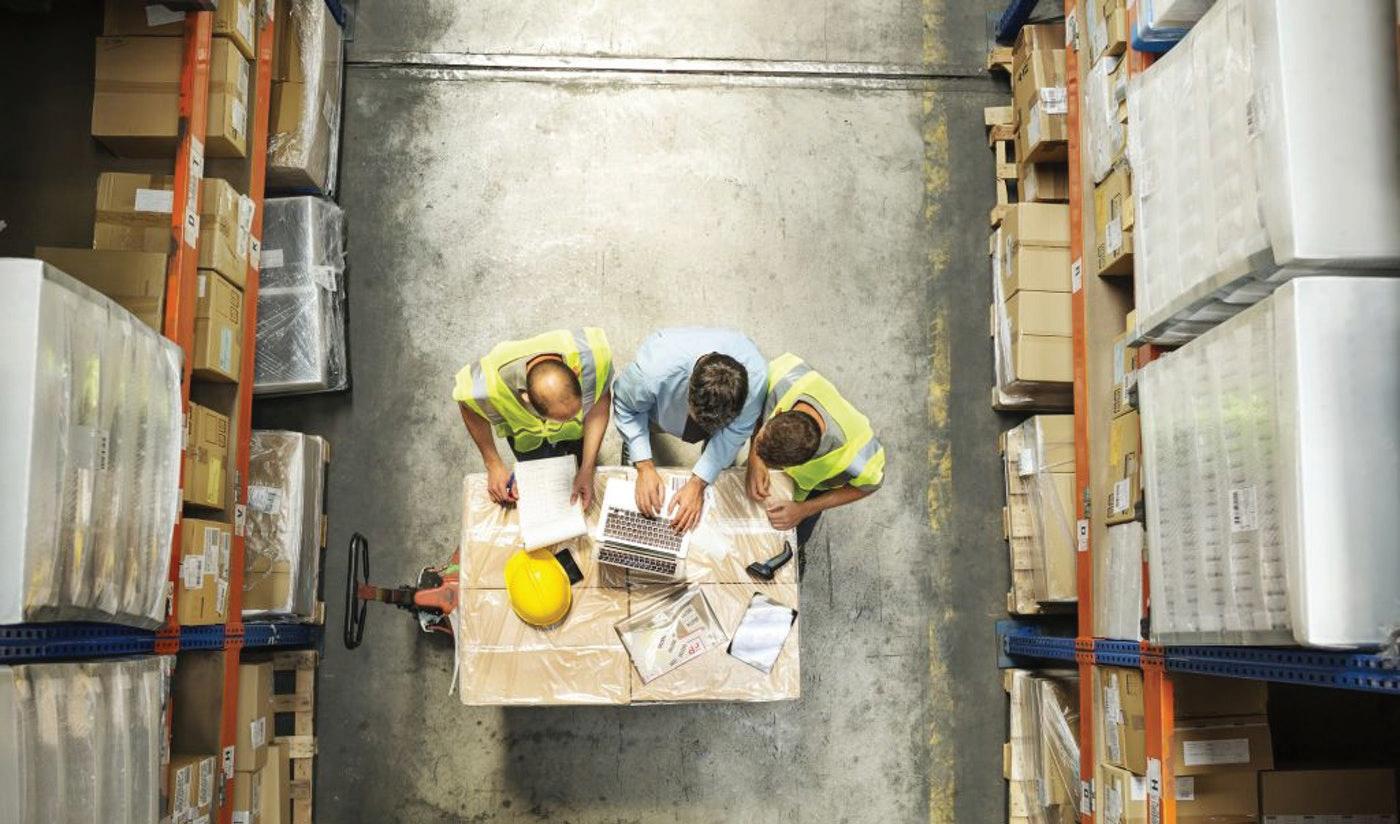
8 minute read
PERSPECTIVES
Colgate-Palmolive Focuses on Machine Health to Improve Supply Chain Operations
By David Greenfield
Editor-In-Chief/Director of Content
From toilet paper shortages and soaring lumber rates affecting home prices to long-delayed shipments of household appliances and furniture, numerous supply chain concepts once reserved for procurement and logistics professionals have become almost common knowledge to people outside industry. Likewise, a focus on the close connection between production operations and their affect on supply chains is gaining more adherents.
As noted in the recent Automation World article, “Supply Chain Optimization and the Future of Industry” (awgo.to/1232): The growing need for end-to-end visibility is particularly relevant for plant-level operators and systems integrators because it often requires more integration between supply chain software and manufacturing execution systems (MES) to extract granular data such as equipment health and material availability that can help to more accurately gauge a facility’s true capacity. Collecting and communicating this data to supply chain partners in real time can assist them in more effectively coordinating their own procurement and inventory activities.
A good example of this trend in connecting manufacturing operations to the supply chain can be seen at Colgate-Palmolive where, according to Warren Pruitt, vice president, global engineering services, the company has been bolstering its supply chain reliability by moving toward predictive maintenance of our machinery. The predictive maintenance model employed by the company “preserves machine health through 24/7 monitoring via wireless sensors combined with analytics powered by artificial intelligence [AI],” said Pruitt.
Colgate-Palmolive is feeding this wireless sensor data into Augury’s machine health software platform. Pruitt pointed out that this enables Colgate-Palmolive’s machine data to be compared with machine data from more than 80,000 other machines connected to the Augury platform around the world.
“That massive analytical scale brings us insights on how to optimize the performance of equipment and make ever-smarter choices on how and where we deploy it,” Pruitt said. “What’s possible only gets more compelling as this AI solution harnesses more data to create better health outcomes for our machines and our business.”
Sensor data
Approaching the development of this machine health monitoring system at Colgate-Palmolive required investigation into the best sensor type for this job. According to Pruitt, “Bluetooth sensors require a person with a smart phone to collect the data, and wired sensors come with a high price tag. But the wireless sensor solution we’re now using automates that data collection
An Augury Machine Health sensor on industrial equipment. Note: This photo is supplied by Augury and is not from a Colgate-Palmolive plant.
and analysis—monitoring vibration, magnetic flux (energy use), and surface temperature. When issues arise, reliability professionals remotely alert and collaborate with our plant teams as needed.”
The sensors used in the Augury Machine Health system were retrofitted onto Colgate-Palmolive’s existing equipment to capture vibration, temperature, and magnetic data and transmit it to the Augury platform.
Pruitt explained that Colgate-Palmolive uses Augury’s sensors on a variety of rotating equipment, such as homogenizers, mixers, pumps, case packers, fillers, cartoners, conveyors, and agitators.
Sensor data is transmitted via Wi-Fi to the Augury Machine Health platform in the cloud. With the data in the system, Augury’s AI algorithms can diagnose machine malfunctions to create what Augury calls the “baseline.”
Improving yield, reducing risks
According to Augury, its Machine Health system doesn’t just “automatically diagnose machine malfunctions, it tells users how and when to fix them.” The company claims its software goes beyond the capabilities of the average predictive maintenance system by providing a real-time snapshot of a machine’s health and immediately alerting users of machine faults, their severity, and what actions to take to prevent a failure. This also allows for specific machines at highest risk of failure to be prioritized and helps users better understand the risks of downtime.
“Although early diagnosis of problems is a key advantage here, there are additional savings from extending use of equipment past what would be typical preventative maintenance schedules,” said Pruitt. “Instead of stopping production as a matter of course, say, every six months, we monitor the near real-time health and performance of our machines and if all is well, we can safely keep them running nine months or longer. This has increased our available manufacturing capacity by allowing higher production volumes, which has been invaluable during the COVID-19 crisis.”
Pruitt also noted that supply chain interruptions and capacity requirements were reducing the available capital for strategic growth at Colgate-Palmolive, driving the company to explore new systems, like Augury’s Machine Health, to improve yield, lower operating costs, and mitigate manufacturing risks. “The goals of the Machine Health program were to help improve output, reduce downtime, and reduce MRO (maintenance, repair, and operations) spending by moving from preventive to predictive maintenance,” he said.
Notable improvements
Providing a specific example of how Augury’s Machine Health system has helped Colgate-Palmolive, Pruitt noted that the system’s AI detected rising temperatures in the drive of a tube maker and alerted the plant team. “Upon inspection, they discovered a problem with the motor’s water cooling system,” he said. “By getting it quickly resolved, we prevented the drive from failing due to overheating, which would’ve stopped the tube production line and incurred replacement costs. We figure the savings at 192 hours of downtime and an output of 2.8 million tubes of toothpaste, plus $12,000 for a new motor and $27,000 in variable conversion costs.”
In another example, Pruitt said Machine Health’s AI provided an early warning that a gearbox in a liquids machine was experiencing structural and operational issues, putting it at high risk of failure that could shut down the line. “The team was able to order a replacement gearbox and plan the maintenance to swap it in, bringing the machine to acceptable condition with minimal interruption,” he said. “The benefits of having real-time access to machine health analytics have been so powerful, we’re going to roll out this technology across our global supply chain.”
Accoring to Pruitt, mutiple ColgatePalmolive plants currently use Machine Health. “For example, six Hill's Pet Nutrition plants have deployed the technology. Within four months of deployment, the cost savings from Machine Health had paid for the annual Machine Health program in all six plants,” he said.
Based on its experience thus far with the system, Hill’s is starting to combine machine insights with quality insights to predict which pet food formula will run best on which extruder, a process which will influence future product development, Pruitt said.
Coming 2022
Autonomous Mobile Robots and Wearables Come Together to Boost Warehouse Productivity
By David Miller
Senior Technical Writer
While warehouse automation doesn’t predominate Automation World coverage, as we focus more on automation in production operations, warehouse automation does play a vital role in the manufacturing industries by serving as a critical link in a supply chain. In fact, when interviewed for a recent supply chain feature both Andrew Robling, senior product manager at Epicor, and Jonathan Foster, principal consultant at Proxima, indicated automated improvements to warehouse processes as one of the primary areas where advances in supply chain management would occur in the future.
Swelling warehouse labor shortages are one of the most prominent reasons for their assessment. While the issue has been long gestating, it rapidly grew worse when the COVID-19 pandemic pushed many out of hands-on fields that require them to occupy crowded physical spaces. As a result, both autonomous mobile robots (AMRs) and various wearable technologies have seen growing adoption in logistics operations due to their ability to take over human tasks entirely in some cases and enhance the productivity of human workers in others.
This operating reality is driving a strategic partnership between inVia Robotics, which provides AMRs through a robots-as-a-service (RaaS) model, and Rufus Labs, a company that supplies wearable technologies and accompanying analytics software. An important aspect of inVia’s RaaS model for warehouse use is that it allows end-users to be billed per item moved rather than by the number of robots deployed. According to the companies, the goal of the initiative is to provide warehouse operators with a suite of technologies that can be rapidly deployed and integrated for increased picking rates with existing labor while keeping upfront costs low.
InVia’s AMRs are able to autonomously retrieve items and bring them to stationary workers who are directed to scan the items and place them in an order bin by inVia’s PickMate software, which is run from Rufus Labs’ wearable devices. These wearables include ergonomic gloves for scanning items and wristmounted tablets to receive instructions and other information. PickMate then uses the same artificial intelligence-driven analytics employed by inVia’s AMRs to direct workers as to how inventory can most efficiently be picked and packed out, allowing intelligently optimized work processes to be followed even when the shape or arrangement of items that need to be picked are too complex or irregular for AMRs or other robots to handle. From here, all data gathered is fed back into inVia’s Logic and Rufus Labs’ WorkHero analytics software so that further opportunities for optimization can be identified. "Optimizing humans and robots in the warehouse is key to future sustainability, increased productivity, and ensuring a safe environment for workers,” said Gabe Grifoni, CEO and founder of Rufus Labs. “Rufus WorkHero already cuts pick time in half and provides added safety features to pickers. Our partnership with inVia will continue to improve throughput for our mutual customers, and allow for future innovations between humans and machines.”









